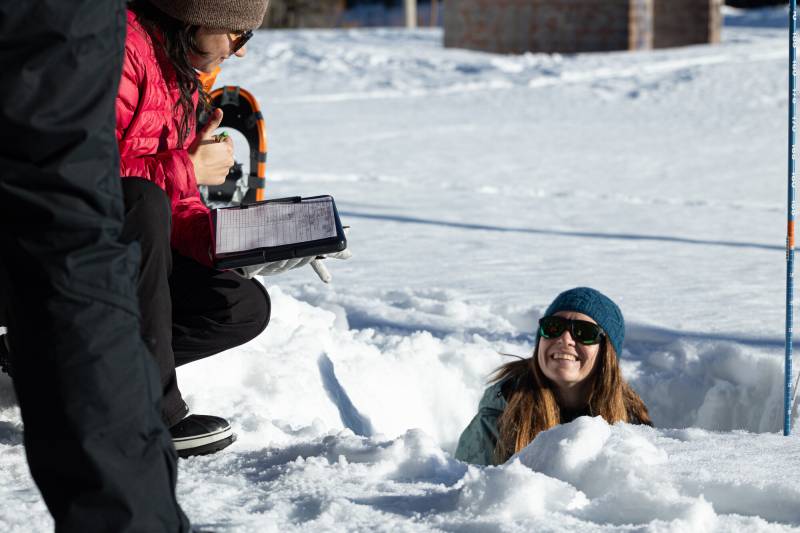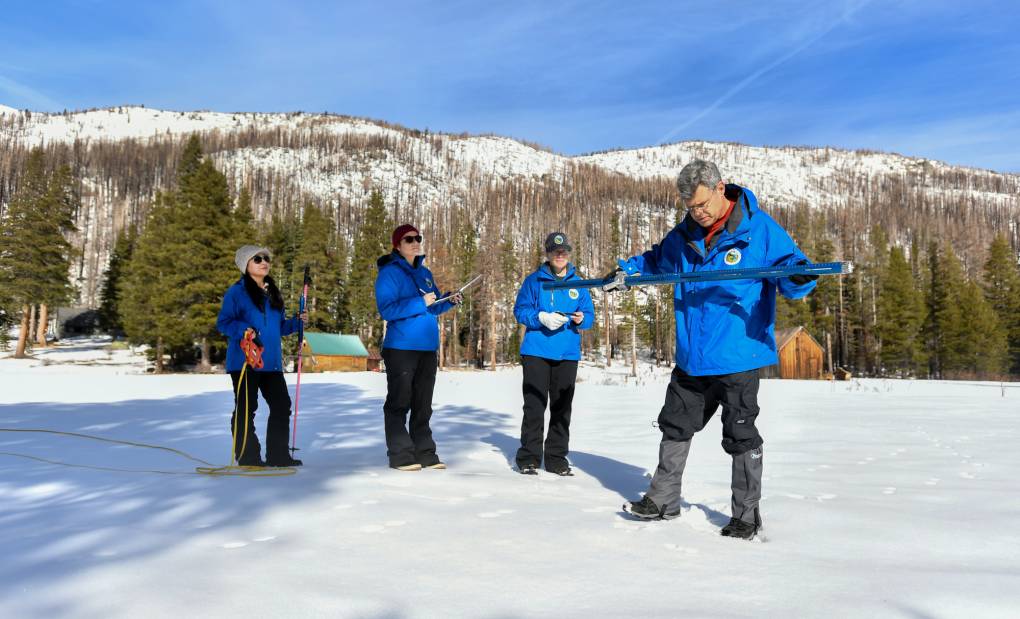“The reservoirs are functioning as intended to kind of have a little bit of a buffer and then work with what Mother Nature provides each year,” Anderson said.
Over the next two weeks, the federal Climate Prediction Center forecasts below-average precipitation across California. Anderson’s larger worry is that the snow could melt quickly during potentially warm to extremely warm periods forecasted for later this spring and early summer. In turn, that rapid snowmelt could cause grasses to grow quickly, leading to fuel for early season grass fires.
Cooler temperatures, on the other hand, would allow for a more moderate rate of snowmelt that would feed reservoirs without overwhelming them or leading to overgrowth of grasses.
“As we have longer days, that means more opportunity for more energy to move into the pack, getting it ready to melt,” Anderson said. “The longer we stay above freezing, the more opportunity for that water to start moving through the watershed.”
Andrew Schwartz, director of the UC Berkeley Central Sierra Snow Lab, said all the snow over the last week has created the perfect conditions for winter sports enthusiasts in the Lake Tahoe area.
“If you’re a skier or snowboarder, I encourage you to get up here because conditions are fantastic,” Schwartz said.
He expects the snowpack to grow even more in the coming days as a storm continues to pelt the Sierra with as much as another foot of snow.
“We’re sitting pretty good without a huge amount of deficiency; warm temperatures are the big concern now,” Schwartz said.

